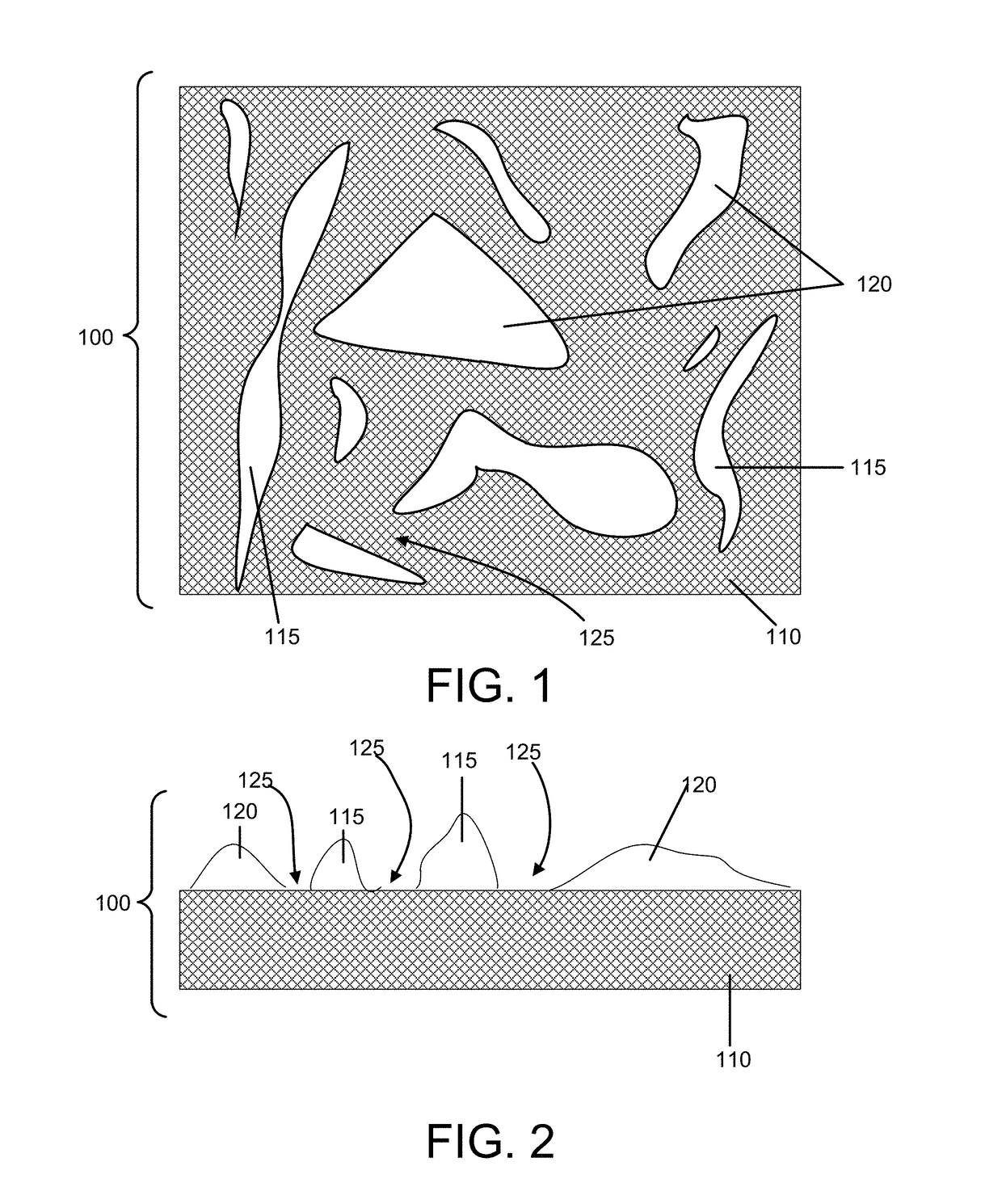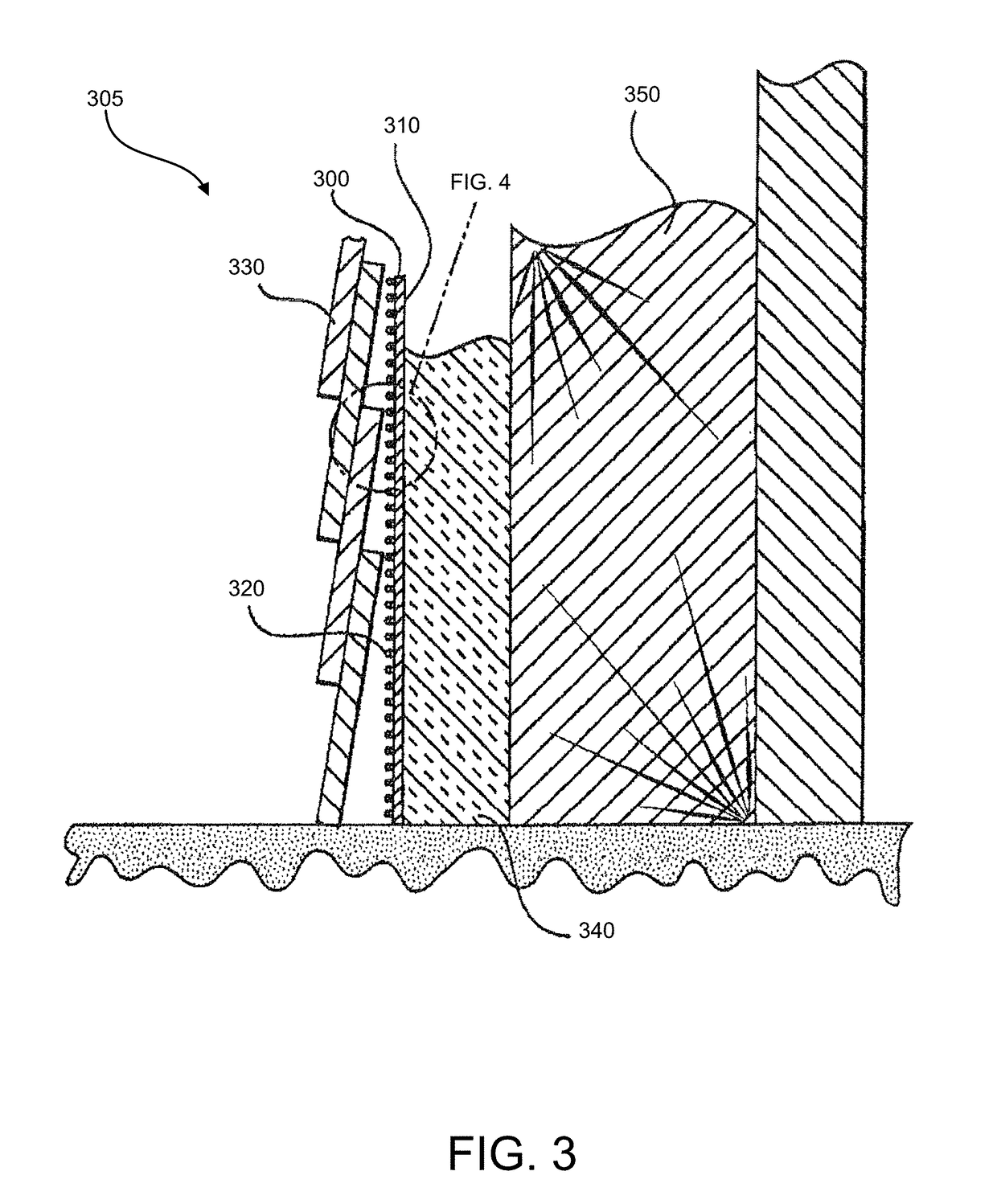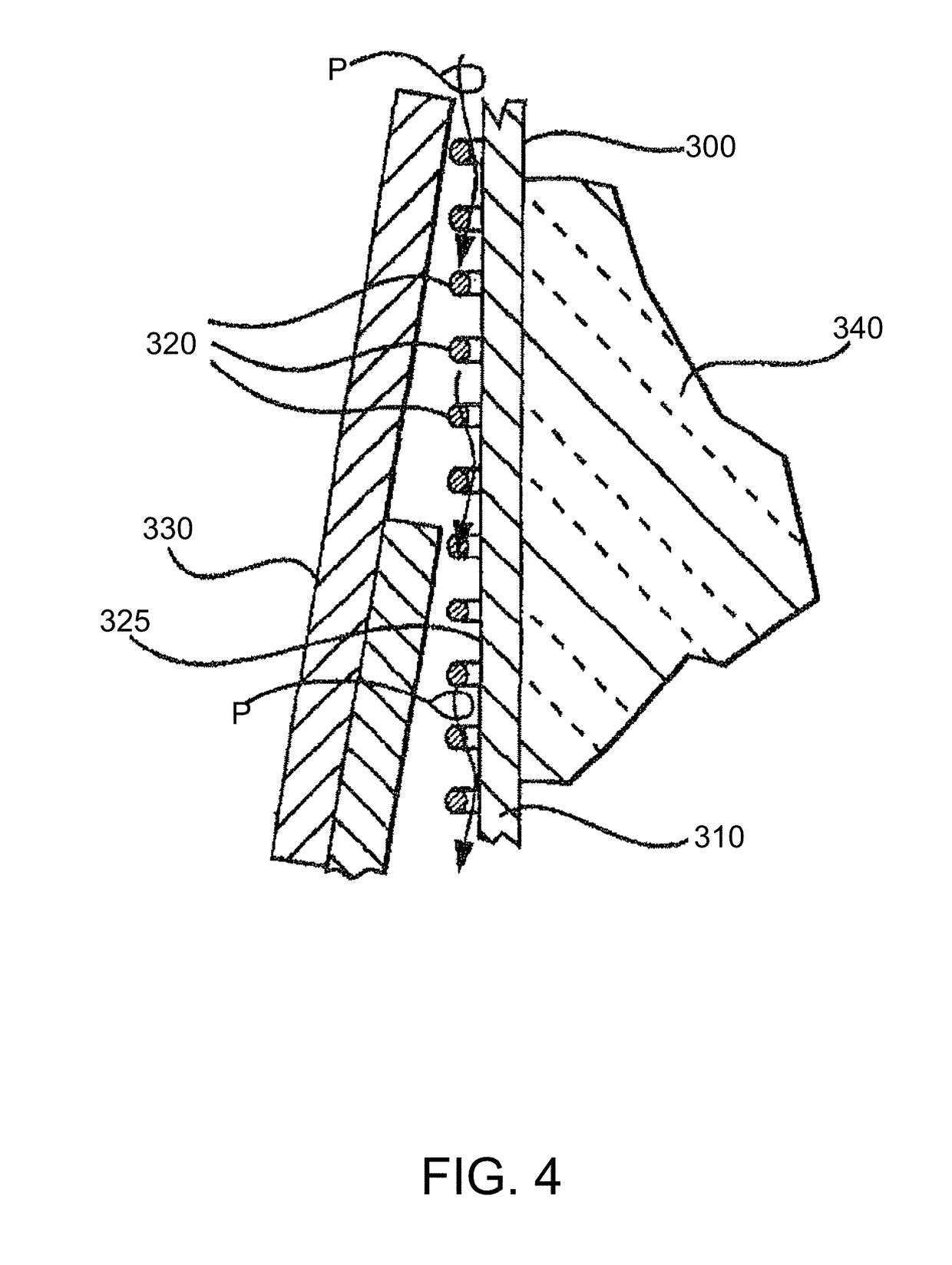Drainable weather resistive barrier
a weather resistive barrier and water drainage technology, applied in the direction of layered product treatment, synthetic resin layered products, water-setting substance layered products, etc., can solve the problems of resistive barriers being susceptible to several problems, resistive barriers may be easy to be damaged, and many of these weather resistive barriers can only be used in vertical applications
- Summary
- Abstract
- Description
- Claims
- Application Information
AI Technical Summary
Benefits of technology
Problems solved by technology
Method used
Image
Examples
example 1
[0149]In Example 1, the drainage promoting fabric described above was tested in a vertical orientation according to the test method previously described herein. Tables 1 and 2 illustrate the results as follows:
[0150]
TABLE 1Drainage Promoting Fabric: Vertical OrientationDrain TimeWater Applied (minutes)(minutes)Test Wall #1153045607560Total Weight (lbs)4.0463.9724.3383.6264.0902.992Tare Weight (lbs)0.7080.7540.7080.7540.7080.754Net Weight (lbs)3.3383.2183.6302.8723.3822.238
[0151]
TABLE 2Total Water Applied (lbs)18.950Total Water Drained (lbs)18.678% Water Drained98.5%% Water Retained1.5%
example 2
[0152]In Example 2, the drainage promoting fabric described above was tested in a horizontal orientation according to the test method previously described herein. Tables 3 and 4 illustrate the results as follows:
[0153]
TABLE 3Drainage Promoting Fabric: Horizontal OrientationDrain TimeWater Applied (minutes)(minutes)Test Wall #2153045607560Total Weight (lbs)3.0224.1183.8744.2144.0301.874Tare Weight (lbs)0.7080.7540.7080.7540.7080.754Net Weight (lbs)2.3143.3643.1663.4603.3221.120
[0154]
TABLE 4Total Water Applied (lbs)17.860Total Water Drained (lbs)16.746% Water Drained93.8%% Water Retained6.2%
example 3
[0155]In Example 3, the drainage promoting fabric described above was again tested in a vertical orientation according to the test method previously described herein. Tables 5 and 6 illustrate the results as follows:
[0156]
TABLE 5Drainage Promoting Fabric: Vertical OrientationDrain TimeWater Applied (minutes)(minutes)Test Wall #3153045607560Total Weight (lbs)3.3963.8184.2043.7663.8162.816Tare Weight (lbs)0.7080.7540.7080.7540.7080.754Net Weight (lbs)2.6883.1103.4963.0123.1082.062
[0157]
TABLE 6Total Water Applied (lbs)18.94Total Water Drained (lbs)17.47% Water Drained92.2%% Water Retained7.8%
Summary of Examples 1-3
[0158]
TABLE 7Test SpecimenDrainage Efficiency#198.5%#293.8%#392.2%Average94.8%
[0159]As such, drainage promoting fabric according to the invention may have an average drainage efficiency of about 95% as measured by the ASTM test method D-2273 when the water spray was applied directly to the innermost layer of TYPAR®. Moreover, no water was observed on the interior or exterior ...
PUM
 Login to View More
Login to View More Abstract
Description
Claims
Application Information
 Login to View More
Login to View More - R&D
- Intellectual Property
- Life Sciences
- Materials
- Tech Scout
- Unparalleled Data Quality
- Higher Quality Content
- 60% Fewer Hallucinations
Browse by: Latest US Patents, China's latest patents, Technical Efficacy Thesaurus, Application Domain, Technology Topic, Popular Technical Reports.
© 2025 PatSnap. All rights reserved.Legal|Privacy policy|Modern Slavery Act Transparency Statement|Sitemap|About US| Contact US: help@patsnap.com



